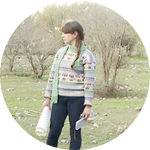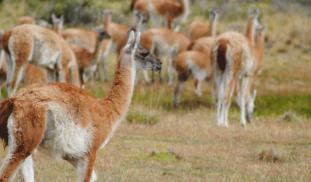105
-1
3
References
- 1. Root-Bernstein, M., Guerrero-Gatica, M., Piña, L., Bonacic, C., Svenning, J. C., & Jaksic, F. M. 2016. Rewilding-inspired transhumance for the restoration of semiarid silvopastoral systems in Chile. Regional Environmental Change, 1-16.
- 2. Root-Bernstein, M., Valenzuela, R., Huerta, M., Armesto, J., & Jaksic, F. (2017). Acacia caven nurses endemic sclerophyllous trees along a successional pathway from silvopastoral savanna to forest. Ecosphere, 8(2).
- 3. Root-Bernstein, M., & Svenning, J. C. (2016). Prospects for rewilding with camelids. Journal of Arid Environments, 130, 54-61.
- 4. Newton, A. C., & Cantarello, E. (2015). Restoration of forest resilience: An achievable goal?. New Forests, 46(5-6), 645-668.
Please wait...
About This Project
Guanacos, the wild cousins of llamas, lived throughout Chile until about 500 years ago. Central Chile is a mediterranean climate biodiversity hotspot, with many endemic plant and animal species. This is a pilot project to rewild the "espinal" savannas of central Chile with guanacos. We expect guanacos to have positive ecological interactions with the main tree in espinal, the espino. Guanacos in espinal should restore this habitat, raise the profile of local biodiversity, and facilitate sustainable livestock production.
More Lab Notes From This Project

Browse Other Projects on Experiment
Related Projects
Using eDNA to examine protected California species in streams at Hastings Reserve
Hastings Reserve is home to three streams that provide critical habitat for sensitive native species. Through...
City smart: Are cities making birds smarter?
One cannot go to Florida and miss the White Ibises roaming golf, park and private lawns. But how does a...
How do polar bears stay healthy on the world's worst diet?
Polar bears survive almost entirely on seal fat. Yet unlike humans who eat high-fat diets, polar bears never...




